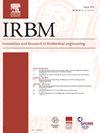基于移动性分析的跌倒事件中人的行为监测与传感系统
IF 5.6
4区 医学
Q1 ENGINEERING, BIOMEDICAL
引用次数: 0
摘要
目的观察老年人在自然生活中的活动,以更好地了解其潜在的行为变化和预测风险。为此,一个多学科研究团队设计了一个全面的硬件和软件基础设施,并在智能平板实验室进行了预测试。它可以收集相关数据并开发算法来分析活动并检测诸如跌倒、徘徊或其他危险情况的变化。这项研究是由12位独立的老人在一个合租的房子里进行的。本研究的重点是在家中跌倒的事件,并分析跌倒前后的活动行为,以观察个人在家中的康复情况。材料和方法每个住户的房间和两个共享空间都配备了运动和磁接触传感器,以记录运动和进出活动。9个月的数据收集和分析,突出活动模式和这些行为的变化,特别是当跌倒发生时,然后当正常行为恢复时,如果有的话。实施了两个层次的分析:检测每个个体的活动指标的偏差,以及检测既定行为模式随时间的漂移。用于提取模式的分类技术是k均值划分算法。我们还使用DBSCAN(基于密度的带噪声应用空间聚类)方法来验证K-means方法的性能。结果对观察期间记录的4次跌倒进行了数据分析,涉及4名房屋居住者。结果强调了模范行为与跌倒和住院后返回相关事件之间的关系。在摔倒发生的日子里,合租房屋护工的注释作为基本事实,验证了检测的有效性。聚类方法模式识别的初步结果表明,K-means方法比DBSCAN方法提供了更令人信服的结果。在这项研究中,通过观察研究过程中跌倒的居民的运动信号,我们能够识别出跌倒后的特征行为。本文章由计算机程序翻译,如有差异,请以英文原文为准。

Monitoring and Sensing System for People's Behavior During Fall Events Based on Mobility Analysis
Objectives
Observing the activities of the elderly in natural life is a crucial issue nowadays to better understand their potential behavioral changes and predict risks. To this end, a comprehensive hardware and software infrastructure has been designed by a multidisciplinary team of researchers and pre-tested in a smart flat lab. It enables to collect relevant data and develop algorithms to analyze activities and detect changes such as falls, wandering or other risky situations. This study was carried out in a shared house by 12 independent elderly people. The study focuses on episodes of falls in the house, and analyzes mobility behavior before and after falls to observe the person's rehabilitation in the home.
Materials and Methods
Each resident's room and the two shared spaces were equipped with motion and magnetic contact sensors to record movements and entry/exit activities. 9 months of data were collected and analyzed, highlighting patterns of activity and changes in these behaviors, particularly when a fall occurred and then when the usual behavior returned, if at all. Two levels of analysis were implemented: the detection of deviation in activity indicators for each individual, and the detection of drift in the established behavior pattern over time. The classification technique used to extract the patterns is the K-means partitioning algorithm. We also used the DBSCAN (Density-Based Spatial Clustering of Applications with Noise) method to validate the performance of the K-means method.
Results
Data analysis was carried out on the 4 falls recorded during the observation period, involving 4 of the house's occupants. The results highlight the relationship between model conduct and events related to falls and returns from hospitalization. Detection was validated by share house carers' annotations, acting as a ground truth, on the days when falls occurred. The first results of pattern recognition with clustering methods show that the K-means method provides more convincing results than the DBSCAN method. In this study, by observing the movement signals of residents who fell during the course of the study, we were able to identify characteristic post-fall behaviors.
求助全文
通过发布文献求助,成功后即可免费获取论文全文。
去求助
来源期刊

Irbm
ENGINEERING, BIOMEDICAL-
CiteScore
10.30
自引率
4.20%
发文量
81
审稿时长
57 days
期刊介绍:
IRBM is the journal of the AGBM (Alliance for engineering in Biology an Medicine / Alliance pour le génie biologique et médical) and the SFGBM (BioMedical Engineering French Society / Société française de génie biologique médical) and the AFIB (French Association of Biomedical Engineers / Association française des ingénieurs biomédicaux).
As a vehicle of information and knowledge in the field of biomedical technologies, IRBM is devoted to fundamental as well as clinical research. Biomedical engineering and use of new technologies are the cornerstones of IRBM, providing authors and users with the latest information. Its six issues per year propose reviews (state-of-the-art and current knowledge), original articles directed at fundamental research and articles focusing on biomedical engineering. All articles are submitted to peer reviewers acting as guarantors for IRBM''s scientific and medical content. The field covered by IRBM includes all the discipline of Biomedical engineering. Thereby, the type of papers published include those that cover the technological and methodological development in:
-Physiological and Biological Signal processing (EEG, MEG, ECG…)-
Medical Image processing-
Biomechanics-
Biomaterials-
Medical Physics-
Biophysics-
Physiological and Biological Sensors-
Information technologies in healthcare-
Disability research-
Computational physiology-
…
 求助内容:
求助内容: 应助结果提醒方式:
应助结果提醒方式:


